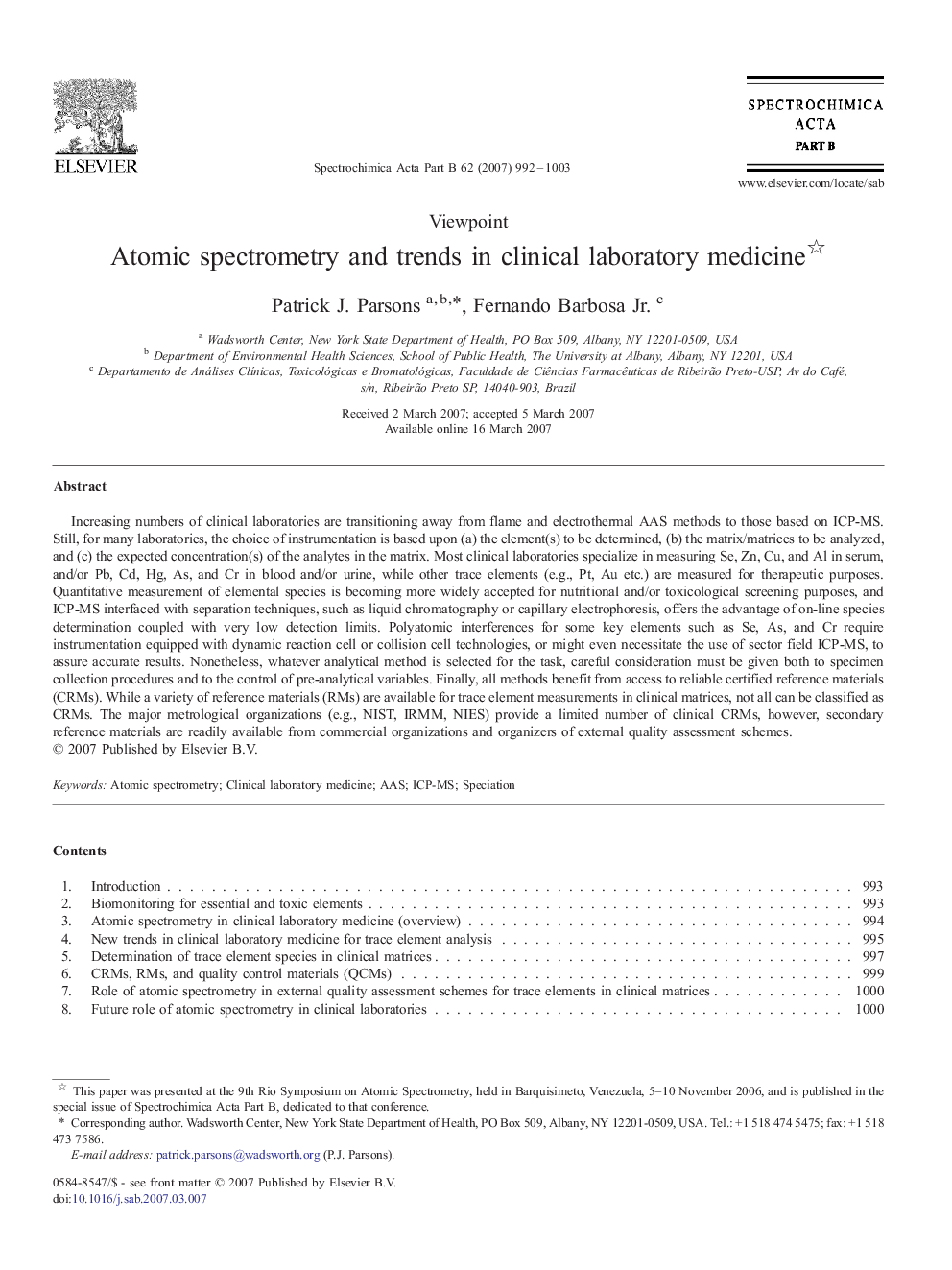| Article ID | Journal | Published Year | Pages | File Type |
|---|---|---|---|---|
| 1240756 | Spectrochimica Acta Part B: Atomic Spectroscopy | 2007 | 12 Pages |
Increasing numbers of clinical laboratories are transitioning away from flame and electrothermal AAS methods to those based on ICP-MS. Still, for many laboratories, the choice of instrumentation is based upon (a) the element(s) to be determined, (b) the matrix/matrices to be analyzed, and (c) the expected concentration(s) of the analytes in the matrix. Most clinical laboratories specialize in measuring Se, Zn, Cu, and Al in serum, and/or Pb, Cd, Hg, As, and Cr in blood and/or urine, while other trace elements (e.g., Pt, Au etc.) are measured for therapeutic purposes. Quantitative measurement of elemental species is becoming more widely accepted for nutritional and/or toxicological screening purposes, and ICP-MS interfaced with separation techniques, such as liquid chromatography or capillary electrophoresis, offers the advantage of on-line species determination coupled with very low detection limits. Polyatomic interferences for some key elements such as Se, As, and Cr require instrumentation equipped with dynamic reaction cell or collision cell technologies, or might even necessitate the use of sector field ICP-MS, to assure accurate results. Nonetheless, whatever analytical method is selected for the task, careful consideration must be given both to specimen collection procedures and to the control of pre-analytical variables. Finally, all methods benefit from access to reliable certified reference materials (CRMs). While a variety of reference materials (RMs) are available for trace element measurements in clinical matrices, not all can be classified as CRMs. The major metrological organizations (e.g., NIST, IRMM, NIES) provide a limited number of clinical CRMs, however, secondary reference materials are readily available from commercial organizations and organizers of external quality assessment schemes.
